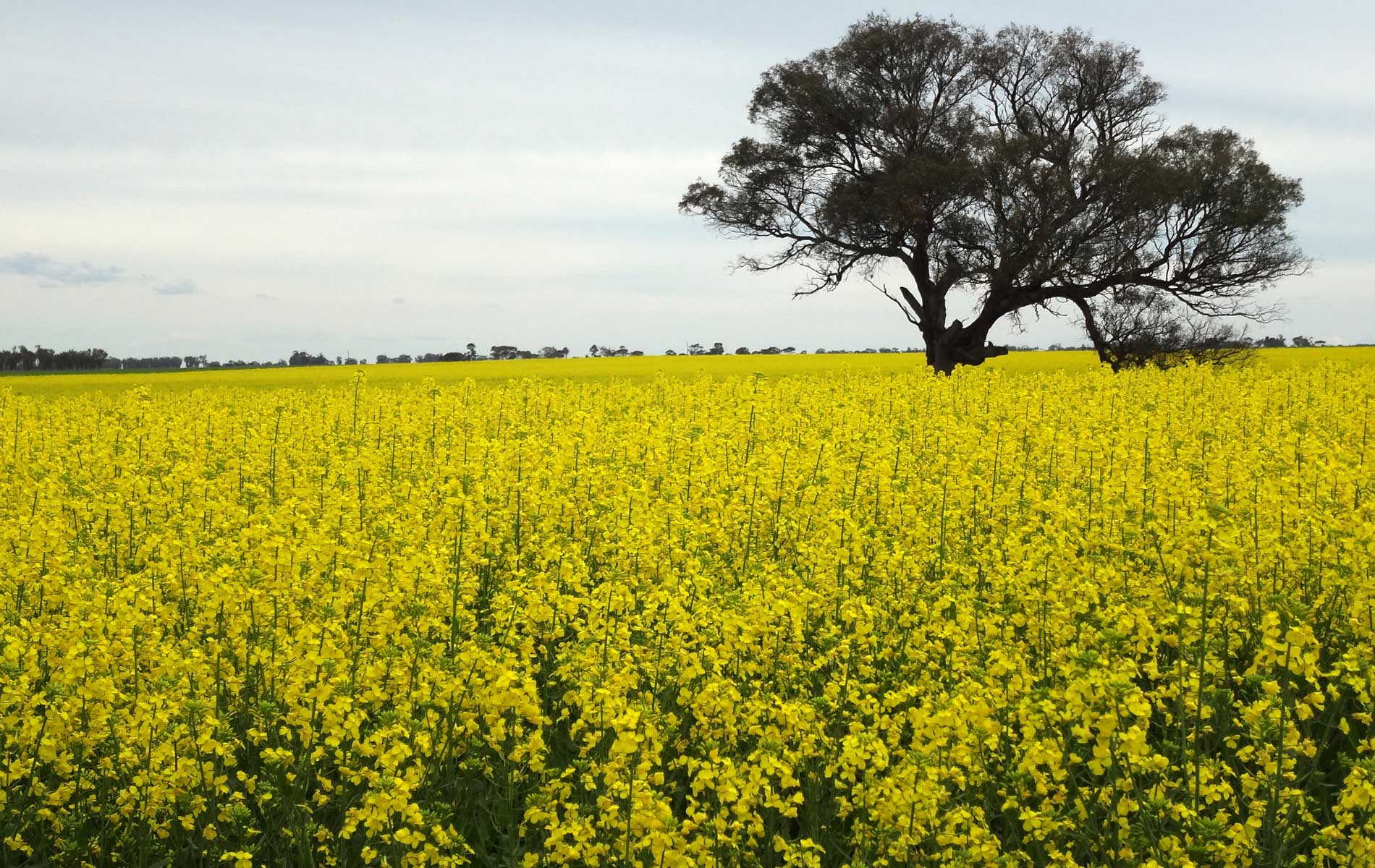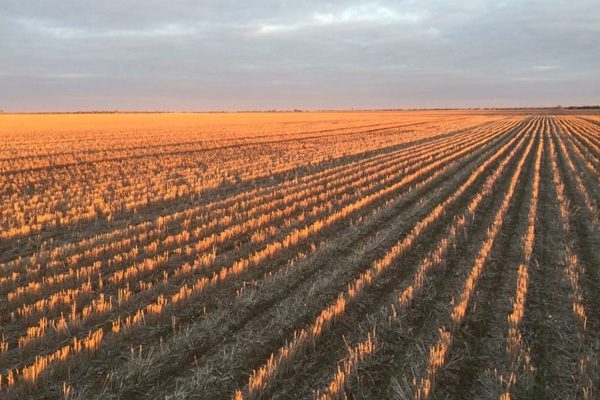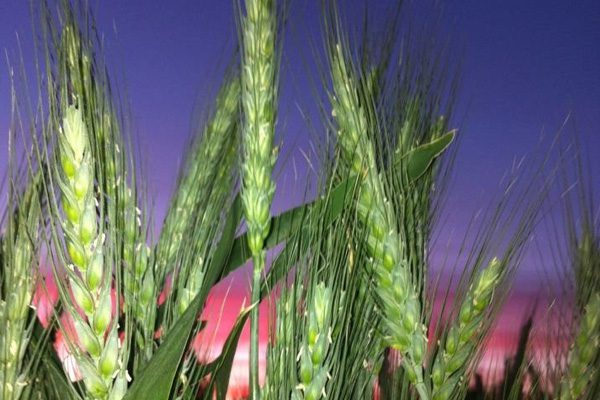Sustainable development entails consideration of people, the environment and the economy as an integral part of a mining development project. As the Donald Mineral Sands (DMS) project develops from concept towards operation, Astron, and its people and contractors will focus on adopting the highest sustainability principles and practices.

Farming land on the Donald deposit; mined areas will be rehabilitated back to original land purpose.
This will include the adoption, in planning and operation, of many of the principles from the United Nations Sustainable Development Goals (SDGs), a framework which supports the 2030 Agenda for Sustainable Development. The agenda defines global sustainability aspirations, including a determination to protect the planet from degradation, including through sustainable consumption and production, sustainably managing natural resources and taking urgent action on climate change, so that it can support the needs of the present and future generations.
Astron and Donald Mineral Sands (DMS) will commit to the Mineral Councils of Australia (MCA) requirement for its members to align with the internationally recognised Towards Sustainable Mining standard (TSM); a standard that supports mining companies in managing key environmental and social risks.
For Astron, a commitment to sustainability has a number of key aspects. Human aspects include health, social and cultural elements. Environment considerations relate to emissions, waste management, rehabilitation, ecological preservation, energy use and climate. Economic aspects include social development, prosperity, competitiveness and resource management.
Astron believes it is able to play an important role in meeting the highest standards of sustainable development, producing mineral products used in array of personal and commercial uses, including telecommunications devices, health and personal welfare solutions, as well other product applications, including photovoltaic cells used in solar panels, that play a key role in the transition to renewable energy. The rare earths product stream from Donald is likewise expected to play a role in a range of renewable energy technologies.

Environment
Water and Energy
The Donald Mineral Sands project considers efficient water resource management to be of great importance. In 2011, DMS purchased a water entitlement from Grampians Wimmera Mallee Water, which was made available from its growth water arising from efficiency gains made during the installation of the Wimmera Mallee pipeline.
Water used during mining and concentrating processes will be recycled wherever practical, monitoring of water usage, recycling and the use of flocculants will occur.
The project is also assessing energy supply sources, including renewable energy options, and will develop a carbon emissions policy and report on energy usage, energy efficiency measures and emissions.



The mining component of the Donald Mineral Sands project will be associated with a comprehensive rehabilitation plan for areas disturbed by mining activities. This plan will seek to minimise the level of “open” area (that is land disturbed by mining); undertake progressive rehabilitation and monitor the effectiveness of all areas rehabilitated.
DMS will be able to draw upon the best practices in land rehabilitation in the mineral sands sector, which has a deep and successful track record in restoring land disturbed by mining to prior land use patterns.
The excavation of a bulk sample from a test pit in 2018 was subsequently rehabilitated back to its original land form. DMS has undertaken rehabilitation trials and assessed the suitability of proposed rehabilitation practices, and has worked with agronomists and landholders to enhance rehabilitation outcomes. The highest scientific standards for land rehabilitation will form an integral part of the planning for the Donald mineral sands development.
Extensive vegetation and habitat assessments have been undertaken in order to develop plans to avoid and minimise vegetation clearance and negative impacts on natural habitats. Areas are to be set aside from mining to protect significant native vegetation and habitat. A vegetation offset plan will be developed to take into account any native vegetation removed.
An approved Cultural Heritage Management Plan is in place for the Donald project area and the company will work with the Registered Aboriginal Party to ensure compliance with all aspects of the plan and all applicable heritage laws, statutes and regulations.
Mineral sands deposits contain small amounts of naturally occurring radioactive material (NORM), observed mainly through small concentrations of uranium and thorium. When the mineral sand is concentrated to a heavy mineral concentrate (involving non-chemical gravity separation and electro-static techniques) the removal of the gangue or non-valuable components can cause higher levels of NORM. DMS will operate within an approved radiation management plan, with baseline studies to measure and monitor background radiation levels and to ensure compliance with all necessary minimum statutory requirements.
Detailed noise and air assessment studies have been undertaken to ensure compliance for mining, concentrating and transportation arrangements with all relevant Victorian Environment Protection Authority and other regulatory environmental standards. Predicted results from modelling work, involving use of sensors at multiple locations around the site, allows DMS to understand the implications of various operational and management practices, while also determining the implications of varying terrain, meteorological and climatic conditions. By undertaking modelling DMS can ensure that relevant mitigation measures are applied and that compliance standards are met, and reported upon regularly.
DMS has developed a transport management plan (TMP) to define all transportation arrangements (routes, hours of operation, hazard and risk reduction, criteria for selection of transport providers etc) that will be implemented to minimise risks associated with heavy vehicle movements. DMS has identified key road infrastructure for upgrading (such as road widening and intersection realignments) prior to project commencement. Transport by rail is preferred to reduce the use of road transport of heavy mineral concentrate to port facilities. The TMP also identifies key areas and times to ensure heavy vehicle transport does not interact with key community facilities and operations, such as schools.